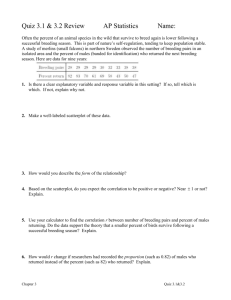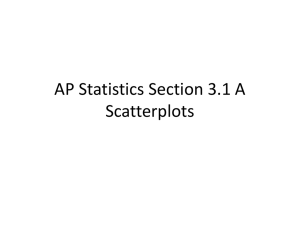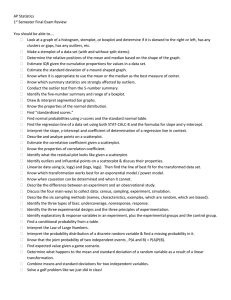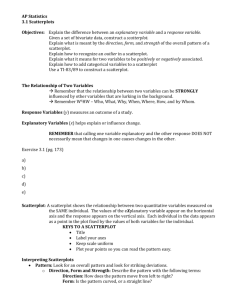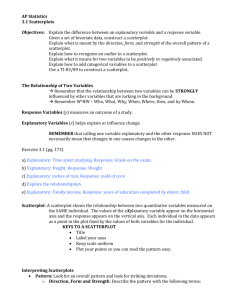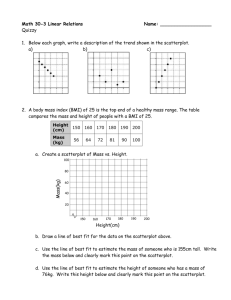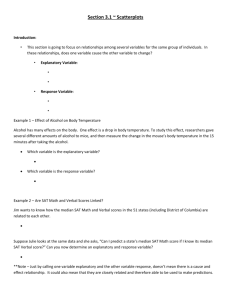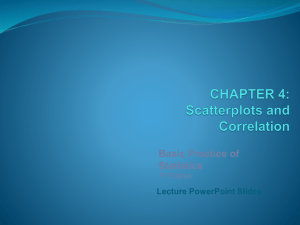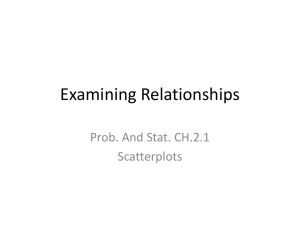7_Independent Practice_In class_Scatterplots
advertisement
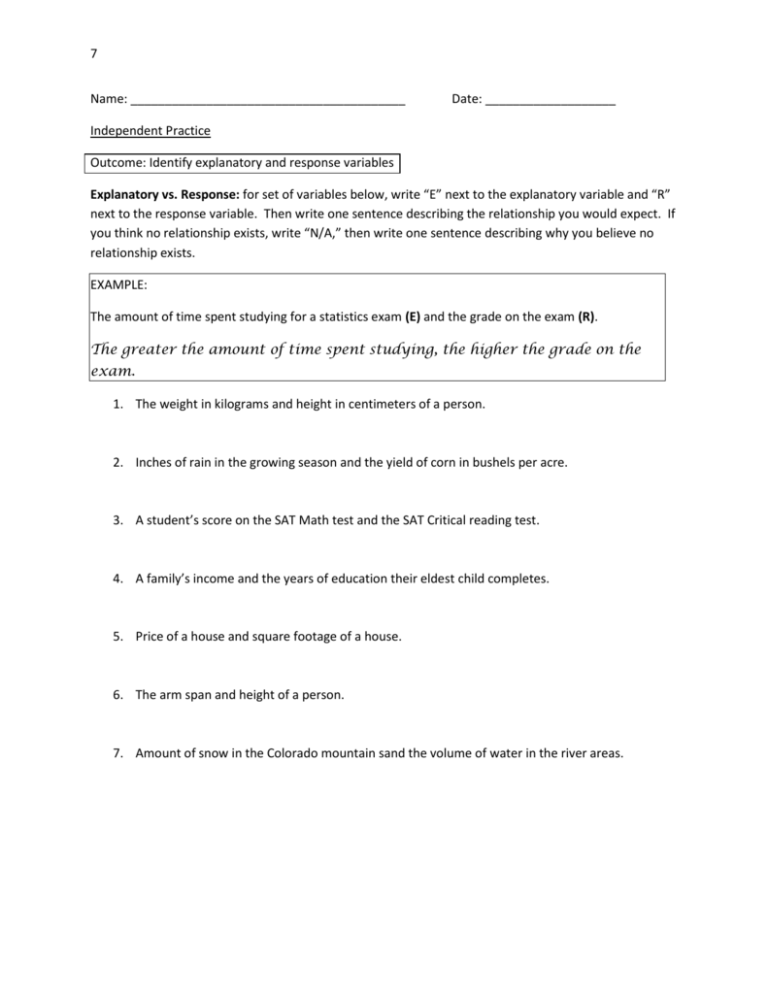
7 Name: ________________________________________ Date: ___________________ Independent Practice Outcome: Identify explanatory and response variables Explanatory vs. Response: for set of variables below, write “E” next to the explanatory variable and “R” next to the response variable. Then write one sentence describing the relationship you would expect. If you think no relationship exists, write “N/A,” then write one sentence describing why you believe no relationship exists. EXAMPLE: The amount of time spent studying for a statistics exam (E) and the grade on the exam (R). The greater the amount of time spent studying, the higher the grade on the exam. 1. The weight in kilograms and height in centimeters of a person. 2. Inches of rain in the growing season and the yield of corn in bushels per acre. 3. A student’s score on the SAT Math test and the SAT Critical reading test. 4. A family’s income and the years of education their eldest child completes. 5. Price of a house and square footage of a house. 6. The arm span and height of a person. 7. Amount of snow in the Colorado mountain sand the volume of water in the river areas. 7 Outcome: Describe the general trend and outliers in a scatterplot. 8. SCATTERPLOT ANALYSIS: Figure 4.4 below is a scatterplot of school grade point average versus IQ score for all 78 seventh-grade students in a rural Midwestern school. Figure 4.4: School grade point averages and IQ test scores for 78 seventh-grade students. a. Describe the overall pattern of the relationship in words (at least one sentence). [NOTE: Points A, B, and C are outliers]. b. About what are the IQ and GPA for Student A? c. For each point A, B, and C, say how it is unusual (for example, “low GPA but a moderately high IQ score”). 7 9. SCATTERPLOT ANALYSIS: More than 1.5 million students took the SAT during the 2007-2008 school year. For the entire group of test takers, the mean score on the Math test was 515. If we look at the data on a state-by-state basis, we see quite a different picture. Figure 4.5 is a scatterplot of the percent of high school graduates who took the SAT and the mean Math test score in each state. a. Describe the overall relationship between the two variables. b. Why are there two distinct clusters of points? c. Two states stand out in Figure 4.5: West Virginia (point 19, 501) and Main (point 87, 466). In what way is each of these states “unusual”? 7 Outcome: Construct and interpret scatterplots given a data set. 10. Often the percent of an animal species in the wild that survive to breed again is lower following a successful breeding season. This is part of nature’s self-regulation, tending to keep population size stable. A study of merlins (small falcons) in northern Sweden observed the number of breeding pairs in an isolated area and the percent of males (banded for identification) who returned the next breeding season. Here are the data for the nine years: BREEDING PAIRS 28 29 30 32 33 38 PERCENT OF MALES RETURNING 82 83, 70, 61 69 58 43 50, 47 a. Why is the response variable the percent of males that return rather than the number of males that return? b. Make a well-labeled scatterplot. c. Describe the pattern you see, including any outliers. d. Do the data support the theory that a smaller percent of birds survive following a successful breeding season?
